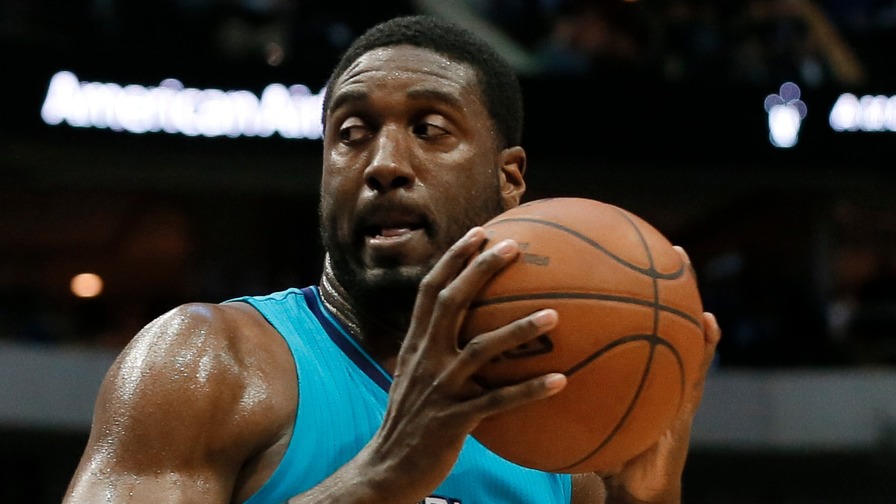What Should We Make of the Hornets-Bucks Trade?

The Milwaukee Bucks and Charlotte Hornets completed a three-player trade on Thursday, and all three involved were of the gargantuan variety.
Milwaukee sent (fairly) freshly inked center Miles Plumlee to Charlotte, in exchange for the towering Roy Hibbert and stretch big man Spencer Hawes.
Let's take a look at how the deal breaks down for both teams.
This Year
The trade will provide a different look for both teams, though the biggest beneficiary of the trade in the immediate future looks to be both Plumlee and the Hornets.
After signing a four-year, $50 million contract this past offseason, Plumlee was expected by many to start in the middle for an athletic Bucks team, especially given the seemingly poor fit of former free agent boon Greg Monroe.
The thing is that Monroe started to play better (a 2.1 nERD rating, 33rd among centers in 2016-17), and he formed a decent center duo along with the shot-blocking John Henson (0.2 nERD).
With Jabari Parker taking the lion's share of minutes at the four spot, there just wasn't much time left for Plumlee, who averaged only 9.7 minutes per game over 32 games (12 starts).
With both Hibbert and Hawes heading to Milwaukee, the Hornets appear to be ready to hand a rotation role to Plumlee, who hasn't played more than 18.6 minutes per game in a season since 2013-14 when he was with the Phoenix Suns.
The only other true center they have on their roster is Cody Zeller, unless you count Frank Kaminsky, who often resides more on the perimeter.
For the Bucks, little is likely to change. Hawes and Hibbert may see some time if they're healthy but are unlikely to play big roles with the team unless a further trade (Greg Monroe anyone?) or an injury occurs.
Long Term
This is where the trade begins to make a bit more sense for both teams.
The Bucks, first and foremost, were obviously trying to clear out future cap space and jettison the contract they gave Plumlee. On initial examination, you can see why: he'd fallen out of head coach Jason Kidd's rotation and was making an eight-figure yearly salary.
Hibbert's $5 million deal expires after this season, and Hawes has just a $6 million dollar player option for 2016-17, which he may well decline. No rocket surgery required to figure that one out.
So why would Charlotte take Plumlee on?
Well, it takes a bit of imagination, but if you look at his per-36-minute stats from last season, he was actually a very effective player: 13 points, 9.6 rebounds and 2.1 blocks on 60.1% from the field. He also posted a very tidy 115 offensive rating and a 107 defensive rating per Basketball Reference.
At 28 years old, his $12.5 million per year salary is par for the course for an NBA rotation player at this point; it's only the 76th-highest average annual deal currently, and that number will surely drop as more and more players sign extensions under the massively increased salary cap.
If Plumlee can regain his 2015-16 form in an expanded role, he could be a nice addition for the Hornets.
Very Long Term
This is where it gets weird again. Charlotte is now committed to a threesome of Zeller, Kaminsky, and Plumlee essentially through 2019-20. Zeller and Plumlee are guaranteed a combined number in the $26 million range for that time, whereas Kaminsky will be a restricted free agent following the 2018-19 season and will likely be due for a hefty raise.
Putting aside the oddity of committing to three guys named Cody, Frank, and Miles as your primary big men (is it 1957? Is Dolph Schayes about walk through that door?) it just seems like a weird long-term fit.
While Kaminsky has always projected as an eventual stretch five, and Zeller is playing a career-high 31% of his minutes at power forward this year, are these three guys who really belong on the same roster, particularly in the modern NBA?
The 24 year old Zeller (3.1 nERD, 18th among centers) is the clear prize of the three, and if Kaminsky's development stagnates, Plumlee could be a good backup plan, but a $40 million commitment seems like a hell of insurance policy.
I guess my point is this: it seems strange to lock yourself into three big men when you're only sure one of them is any good.
Oh well. Such is the price of business in the new NBA.
















